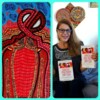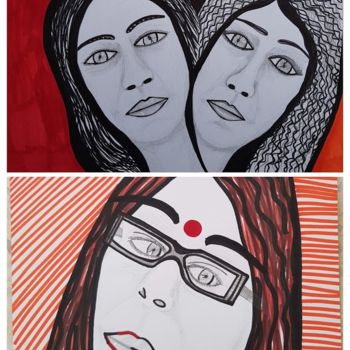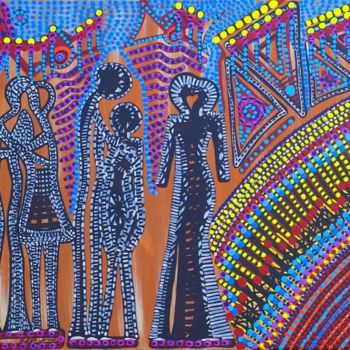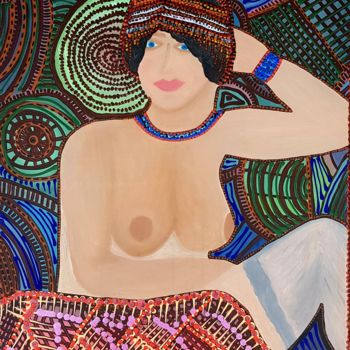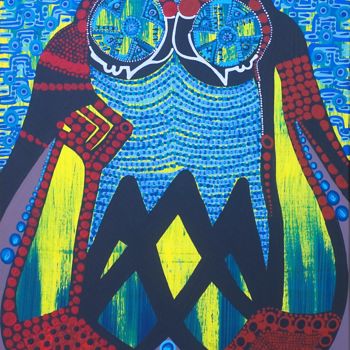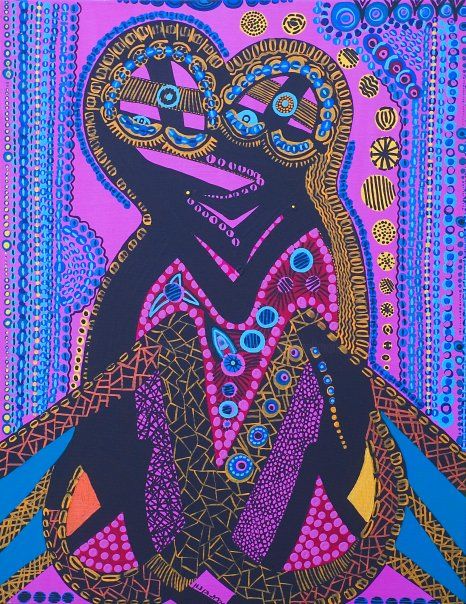
¡Háganos saber si le gustaría ver más fotos de esta obra de arte!
- Detrás del trabajo / lado del trabajo
- Detalles / Firma / Superficie o textura de la obra de arte
- Obra de arte en situación, Otro...
Always loving Mirit Ben-Nun woman israeli artist (2007) Pintura por Mirit Ben-Nun
Vendido por Mirit Ben-Nun
Lo sentimos, el archivo de imagen que tenemos para esta obra de arte es demasiado pequeño.
Por favor contáctenos con todos los detalles de su proyecto y encontraremos una solución con usted.
Contáctenos
Esta imagen está disponible para descargar con una licencia
Vendido por Mirit Ben-Nun
-
Obra de arte original
Pintura,
Acrílico
en Lienzo
- Dimensiones Altura 35,4in, Anchura 35,4in
- Categorías Expresionismo
'Shortness of breath' is not only a sign of physical weakness, it is a metaphor for a mental state of strong desire that knows no repletion; more and more, an unbearable glut, without repose. Mirit Ben Nun's type of work on the other hand requires an abundance of patience. This is a Sisyphean work (requiring hard labor) of marking lines and dots, filling every empty millimeter with brilliant blots. Therefore we are facing a paradox or a logical conflict. A patient and effortful work that stems from an urgent need to cover and fill, to adorn and coat. Her craft of layering reaches a state of a continuous ceremonial ritual.
This ritual digests every object into itself - useful or discarded -- available and ordinary or rare and exceptional -- they submit and devote to the overlay work. Mirit BN gathers scrap off the streets -- cardboard rolls of fabric, assortments of wooden boards and pieces, plates and planks -- and constructs a new link, her own syntax, which she alone is fully responsible for. The new combination -- a type of a sculptural construction -- goes through a process of patching by the act of painting.
In fact Mirit regards her three dimensional objects as a platform for painting, with a uniform continuity, even if it has obstacles, mounds and valleys. These objects beg her to paint, to lay down colors, to set in motion an intricate weave of abstract patterns that at times finds itself wandering the contours of human images and sometimes -- not. In those cases what is left is the monotonous activity of running the patterns, inch by inch, till their absolute coverage, till a short and passing instant of respite and than on again to a new onset.
Next to this assembly of garbage and it's recycling into 'painted sculptures' Mirit offers a surprising reunion between her illustrated objects and so called cheap African sculpture; popular artifacts or articles that are classified in the standard culture as 'primitive'.
This combination emphasizes the difference between her individualistic performance and the collective creation which is translated into cultural clichés. The wood carved image creates a moment of peace within the crowded bustle; an introverted image, without repetitiveness and reverberation. This meeting of strangers testifies that Mirit' work could not be labeled under the ´outsiders art´ category. She is a one woman school who is compelled to do the art work she picked out to perform. Therefore she isn't creating ´an image´ such as the carved wooden statues, but she produces breathless ´emotional jam' whose highest values are color, motion, beauty and plenitude. May it never lack, neither diluted, nor dull for even an instant
Tali Tamir
August 2010
Temas relacionados
Ella trajo el acrílico a su mundo de líneas y puntos; volvió a pintar mujeres y máscaras que aparecían en sus cuadros de infancia y los inundó de líneas y puntos sin separar cuerpo y fondo.
Este es también el momento en que Ben-Nun comenzó a referirse a sí misma como pintora.
y cuando el arte se convirtió en el centro de su vida.
Los colores intensos de las pinturas de Ben-Nun sumergen al espectador en una experiencia sensual. El espectador sigue la oleada de puntos y líneas formadas en capas compactas de pintura. El movimiento conduce a una especie de danza hormonal femenina-masculina dentro del cuerpo humano ya una comunión con una experiencia artística de instinto, pasión, concepción y nacimiento.
Contribuye a esta experiencia la riqueza de características que recuerdan al arte tribal. Ben-Nun los fusiona con un arte pop occidental humorístico y emocionante. En el lenguaje del arte único, Ben-Nun crea una conversación poco convencional entre culturas pasadas y presentes.
Es evidente que las pinturas surgen de una necesidad y un deseo regenerados, una fuerza que brota de su alma, un subconsciente instinto de supervivencia al que no puede o no quiere resistir.
Ben-Nun coloca a las mujeres en el centro del escenario donde ellas son su enfoque de trabajo. Las pinturas tratan obsesivamente de la experiencia existencial de ser mujer en el mundo. Algunas de las pinturas de mujeres llevan lemas feministas que enfatizan la lucha de las mujeres en la sociedad, una crítica por ser consideradas perfectas y obligadas a actuar como modelo de "belleza, pureza y maternidad". El feminismo late en la psique de Ben-Nun, a través de sus diversas imágenes femeninas y el juego entre la belleza y la fealdad; Ben-Nun asimila la conciencia de la posibilidad femenina, de no ser "perfecta", de ser poderosa, influyente y fuera de las normas sociales. Esto obliga a alejarse de las limitaciones aceptables donde Ben-Nun crea un nuevo mundo de espíritu libre para las mujeres.
Mirit Ben-Nun es madre de tres hijos y abuela de tres nietos.
Mirela Tal
-
Nacionalidad:
ISRAEL

- Fecha de nacimiento : fecha desconocida
- Dominios artísticos:
- Grupos: Artistas Israelíes Contemporáneos



